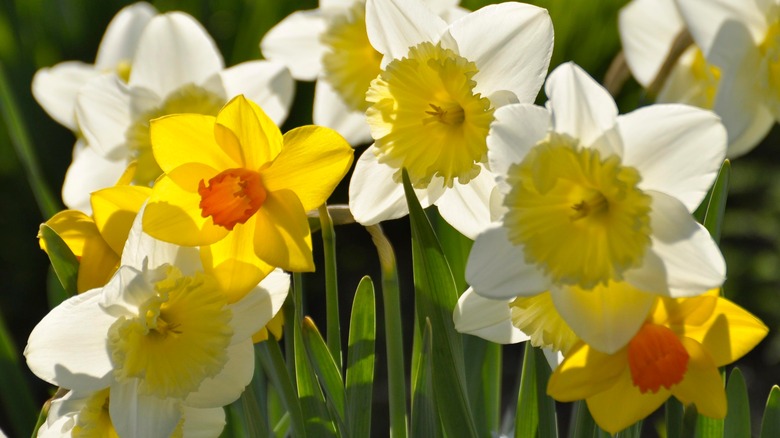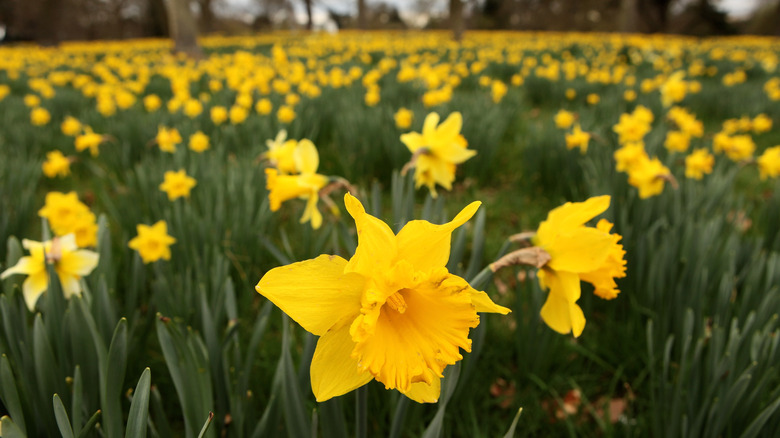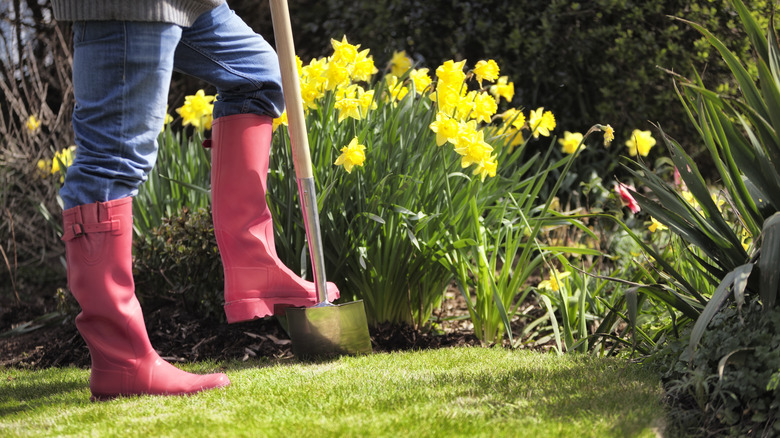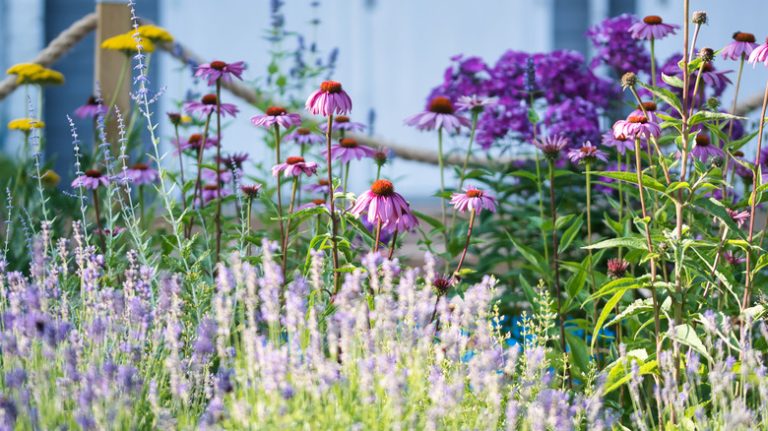Daffodils are reliable spring-blooming bulbs that come in many varieties with variations in color, size, and even fragrance. Once planted, they naturalize freely and will generally increase in number, forming large clumps over time. But should they be planted in clumps at the start or planted sparingly with the expectation they will increase? And how much space should be between clumps of daffodils? A general rule of thumb is to leave 6 inches between single daffodil bulbs to give them room to form clumps without getting too crowded too quickly.
Once daffodils are established, the bulbs will start to put out more growth, and the clumps will grow substantially bigger each year. However, in the first several years, you may only see a very small grouping of blooms. You can start with a small number of bulbs and wait for them to multiply. Within a few years, the clumps should get big enough that they will need dividing. Despite being somewhat more costly than other spring bulbs, daffodils are a terrific investment because they increase so reliably over time. Planting them with proper spacing helps them to form healthy clumps that will bloom beautifully each year.
Know your daffodils’ growing habits

The space needed to plant your daffodil bulbs may also depend on how large the bulbs are. Miniature varieties (such as Thalia, Jetfire, or Minnow) usually have somewhat smaller bulbs. They can be planted a bit more closely together (five inches apart) and tend to be better for growing in pots. Jonquils are a variety of daffodils that are fragrant and have multiple flowers per stem. Plant them in groupings of five to 10 bulbs, spaced six inches apart.
Some gardeners find that older heirloom varieties of daffodil (such as Ice Follies or Mount Hood) increase faster, as they tend to be more hardy than some of the newer hybrids. You can find out if a variety is an heirloom by checking to see when it was introduced; some garden catalogs provide information on a bulb’s history. If you find your heirloom daffodils form large clumps quickly, divide them a bit more often and plant the divided bulbs at least six inches apart.
When planting different varieties of daffodils within the same area, find out what their mature height is so you can plant the taller ones in the back. Knowing the timing of blooms (early, mid, or late spring) will also help you decide where to place them. Plant fragrant varieties near walkways for maximum enjoyment; plant these daffodils closer together their first year (four to five inches apart) to create a zone of sweet perfume in spring.
Considerations for planting daffodils

Plant your daffodils where they’ll have maximum visibility in spring. Large drifts of daffodils look wonderful in woodland gardens, where they naturalize over time. They can be planted beneath trees that don’t start to leaf out until late spring, as they’ll receive plenty of sun at this time. Plant bulbs in small groupings of five to 10 bulbs, with each single bulb in the grouping spaced 5 to 6 inches apart, for a natural-looking spring landscape. Be mindful of tree roots, and don’t plant too close to them.
Many gardeners like to plant daffodils strategically so that when the foliage begins to fade, later spring perennials will appear as camouflage. Day lilies and hostas are good companions for daffodils. As your daffodil clumps and neighboring perennials grow larger, divide them regularly to avoid overcrowding (day lilies and hostas need dividing every two or three years).
Daffodil leaves should be left intact until four to six weeks after blooming to help feed the bulbs for next year. Then, you can trim the leaves back. Daffodils need no other care for the season. Dividing is best done in late summer through autumn; save time by dividing in autumn when you’re planting your other spring bulbs. It’s important to divide daffodils regularly to prevent the clumps from becoming overcrowded, which might cause them to stop blooming. When dividing, replant the bulbs in small groupings of five to 10 bulbs, each planted about 6 inches apart.




